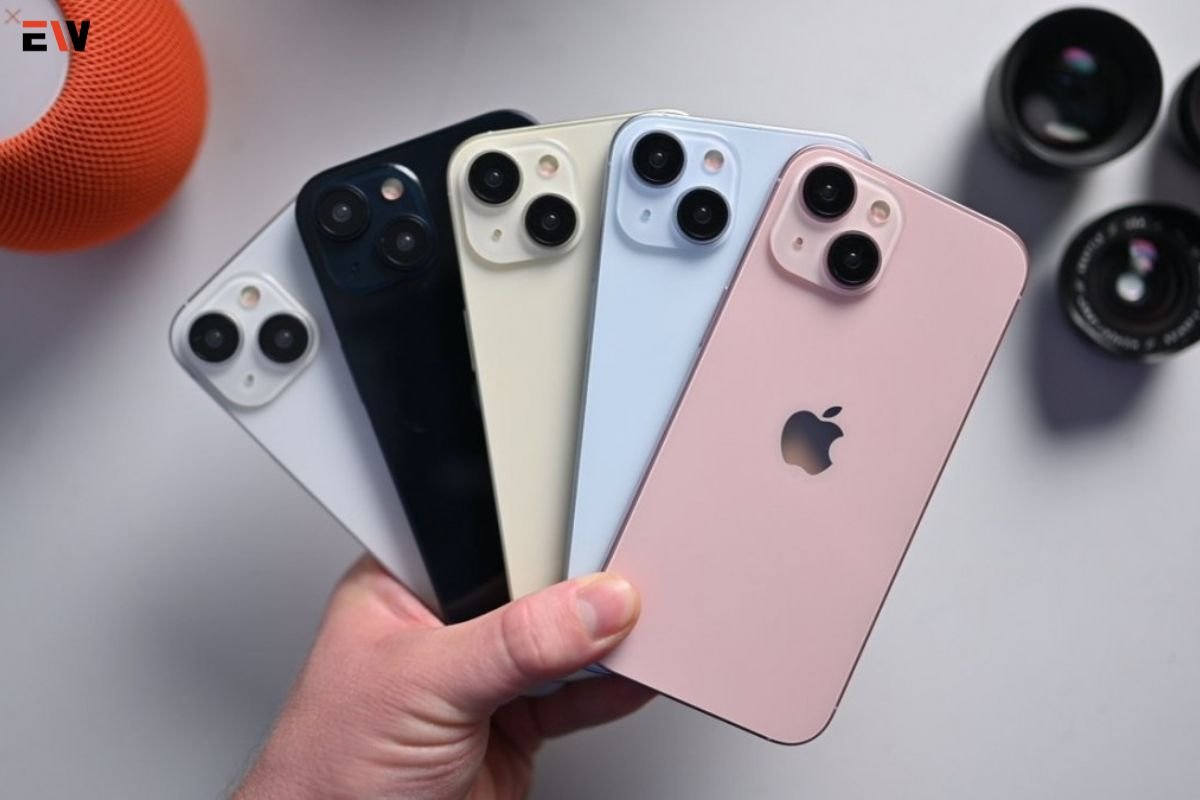Source- PCMag
iPhone 14 Pro was new! The most awaited model of the last year. On the occasion of Diwali, I was willing to gift it to my father. After its launch in September 2022, within a few days, I got to know that one of my friends was returning to India from the USA for Diwali and immediately I asked him to bring one for me.
I found myself very lucky to get it at a cheaper price from the USA. However, at that time, I was completely unaware of the history of the iPhone. The days felt like years waiting for the arrival of the iPhone and that drove me to research the history of the iPhone. Here, I present a few insights from the research I did to learn the history of the iPhone and I am sure you are going to enjoy reading it.
Evolution of iPhone
‘iPhone is not just a phone, it is an emotion for some users!’ They find it the ultimate tool to stay connected not just with their loved ones but also with the latest trends in technology. The history of the iPhone takes you back 15 years when the first model (iPhone 1st generation) was launched in 2007.
The exclusive features like easy zoom-in and zoom-out screen functioning, less complicated web browsing, etc prove a great option for those who want to stay connected with the world. iPhone has brought evolutionary changes in software development, iOS shows the use of specific software for a specific hardware device. Hence, the recent models of iPhones have become not just smartphones but also a sign of lifestyle.
Let’s study the History of the iPhone through Timeline

Since the launch of the first iPhone in 2007, Apple has never failed to amaze its customers with new models and specifications in them. Each new generation of iPhone has represented new features, designs, and improvements in performance. Let us dive into the timeline to study the history of the iPhone in detail.
- 2007: Apple unveiled the inaugural iPhone, featuring a touchscreen interface, iPod functionality, a camera, web browsing capabilities, and various other features.
- 2008: Apple introduced the App Store, providing users with a platform to download a wide range of software applications for purposes such as gaming, social networking, and travel planning.
- 2010: The release of the iPhone 4, which boasted a high-resolution Retina display, a front-facing camera, and the convenience of FaceTime video calling.
- 2011: Apple launched the iPhone 4s, incorporating Siri, a virtual personal assistant, into the device’s capabilities.
- The iPhone 5 made its debut in 2012, offering users a larger 4-inch display, a faster processor, and the added advantage of 4G LTE connectivity.
- The year 2013 witnessed the iPhone 5s and 5c release. The iPhone 5s presented users with an enhanced camera and the introduction of a fingerprint sensor, while the 5c provided a more budget-friendly option.
- Apple introduced the iPhone 6 and 6 Plus in 2014, featuring larger displays, improved processors, and enhanced camera capabilities.
- 2015: Apple introduced the iPhone 6s and 6s Plus, featuring innovative 3D Touch technology and an upgraded 12-megapixel camera.
- 2016: Apple launched the iPhone 7 and 7 Plus, showcasing a water-resistant design, enhanced camera capabilities, and the removal of the headphone jack.
- 2017: Apple unveiled the iPhone 8 and 8 Plus, which sported a glass back, the convenience of wireless charging, and an improved A11 Bionic chip.
- 2018: iPhone XR, XS, and XS Max were launched that boast an ed edge-to-edge display, Face ID technology for facial recognition, and the powerful A12 Bionic chip.
- 2019: Apple released the iPhone 11, 11 Pro, and 11 Pro Max, featuring significant improvements in camera performance, a faster A13 Bionic chip, and enhanced battery life.
- 2020 marked the arrival of the second-generation iPhone SE, serving as a more affordable model. Additionally, Apple introduced the iPhone 12, 12 Mini, 12 Pro, and 12 Pro Max, all equipped with 5G capabilities, advanced camera systems, and the new A14 Bionic chip.
- 2021: Apple released the iPhone 13, 13 Mini, 13 Pro, and 13 Pro Max, highlighting a ProMotion display for smoother visuals, a Ceramic Shield front cover for improved durability, and the powerful A15 chip.
- 2022: Apple unveiled the iPhone 14 lineup, which showcased a fresh design with an expanded display, enhanced camera capabilities, and the cutting-edge A16 Bionic chip. It released other models the iPhone 14 and iPhone 14 Plus, both equipped with a dual-camera system and improved battery life.
Unexplored Facts about the History of iPhone
Every successful business has some unexplored facts that are lesser known to numerous people. Here, you can read about such facts and understand what made the history of the iPhone an incredible journey for the people behind it:

- Project Purple: The original iPhone project Apple was secretive and its team was known as “Project Purple.” It included a small group of employees who had access to the details of the project.
- Codenames of iPhones: During development, every iPhone model gets a codename. For example, “M68” for the original iPhone, “N41” for the iPhone 5, and “D21” for the iPhone X.
- Fake screen: The First iPhone had a fake screen because, during the early stages of development, Apple used a non-functional screen with a static image on it to keep the design secret. It avoided the leaks before the official launch.
- Gorilla Glass protection: Since the iPhone 4 release, Apple has been using Corning’s Gorilla Glass for its iPhone displays.
- Mobile photography: Due to the clear quality of iPhone cameras, people have been using them more often to get better pictures. It played a significant role in making mobile photography popular. Moreover, social media has become image-oriented which drives users crazy about iPhones.
- Milestones: Apple sold over 2.2 billion iPhones worldwide in 2021 since its initial release in 2007, making it one of the most successful consumer electronics devices in the history of the iPhone.
- Origin of Siri: iPhone has virtual assistant Siri, which was originally developed as a standalone app for iOS. Apple acquired it in 2010 and the technology behind Siri was created by a team of researchers at Stanford Research Institute.
- Introduced revolution: The history of the iPhone explains how it has revolutionized the smartphone industry and set high standards for modern smartphones. It influenced the design and features of countless other smartphone models and inspired the development of app ecosystems on other platforms.
What can you learn from the history of the iPhone?
The iPhone is one of the biggest successful models in the smartphone industry. There are many things you can learn from the history of the iPhone and implement in your business such as:

- Innovation and Disruption: With its innovation and disruption, the iPhone is consistently providing something new and exciting to its customers. It challenges conventional norms and introduces groundbreaking features, such as the touchscreen interface and the App Store that transform the mobile industry.
- User Experience Matters: User experiences matter for every smartphone company and Apple is not an exception. It prioritized intuitive design, simplicity, and seamless integration of hardware and software, which resonated with users.
- Ecosystem Integration: Apple can create a cohesive ecosystem of hardware, software, and services. The tight integration of iOS, the App Store, iCloud, and other Apple products increases customer loyalty.
- Iterative Improvement: Apple considers customer feedback as a crucial factor in reducing flaws in its functioning. It released new models with enhancements in design, performance, and features, gradually refining the product based on user feedback and technological advancements.
- Market Timing and Trends: The success of the iPhone underlines the importance of recognizing market trends. Apple capitalized on the growing demand for smartphones, internet connectivity, and app-based services, capturing a significant market share early on.
- Market Adaptability: The iPhone adapts to changing market demands and technological advancements. Apple has embraced new technologies, such as 4G, 5G, biometric authentication, and advanced camera systems, to stay relevant and meet consumer expectations.
- Balancing Innovation and Stability: Apple is capable of balancing innovation with stability. While introducing new features and technologies, it ensured a level of consistency and reliability that appealed to both new and existing users. It is critical to maintaining a strong user base and fostering customer trust.
- Design as a Competitive Advantage: The iPhone’s sleek and visually appealing design has been a competitive advantage for Apple. It emphasizes the importance of aesthetics and user-centric design in creating desirable consumer products.
In short, you can learn about the power of innovation, the importance of user experience, and the value of ecosystem integration from the history of the iPhone. These lessons can be applied to various industries and serve as guiding principles for businesses seeking to create impactful and successful products.
Earlier, we discussed turning points in the history of the iPhone and lesser-known facts about it. We believe our article helped you to make some valuable additions to your knowledge of the history of the iPhone for you. Next time, you buy a new model of iPhone, you will have these insights with you.









